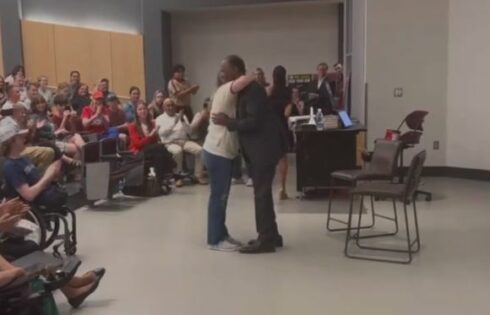
Aggressive testing helped mitigate coronavirus
A professor at Cornell University recently explained to The College Fix why his research, conducted in collaboration with graduation students at the Ivy League institution, overestimated the amount of coronavirus cases the school would experience.
A June 2020 paper by five graduate students and three professors at the university predicted 1,254 people at Cornell would become infected with the coronavirus and 16 people would require hospitalization. The students and professors are all members of the university’s operations research and information engineering department.
As of November 19, the number of confirmed positive coronavirus cases among faculty, students and staff stands at 211. The university does not publish the number of hospitalizations. Spokesperson Rebecca Valli referred The Fix to the coronavirus dashboard and said the “breakdown is all we have to share” when pressed for the number of hospitalizations.
Associate Professor Peter Frazier, one of the professors on the project, told The Fix via email that there are several reasons why the number of infections during the fall semester at Cornell, thus far, has been lower than 1,200.
“The number 1200 assumed we would be testing the campus population once every 5 days and assumed we wouldn’t be doing adaptive testing,” Frazier said via email in early November. At that time, the number of cases stood at around 160 cases.
“What we actually implemented was a stronger intervention: the highest risk group (undergraduates) were tested twice a week (3.5 days between tests on average) and we also implemented adaptive testing,” Frazier explained, referring to a process of identifying people who may have been infected by someone who has coronavirus. The university would quarantine those people and test them.
Frazier further explained:
Epidemics grow exponentially, which means that what seem like small differences in the inputs (like the changes to the testing frequency I mentioned above) cause order-of-magnitude changes in the # of infection. Some important parameters turned out to be a bit better than we estimated. In particular, transmission rates within the student population, especially in dorms, are better than we anticipated.
Frazier was grateful that the number of cases at Cornell has been low and he attributes the low case number to the effectiveness of the university’s COVID-19 policies.
MORE: Cornell Resident Advisors strike for coronavirus ‘hazard pay’
“This may be because of the effectiveness of Cornell’s communications around mask-wearing and social distancing, and because our students are, on the whole, a very responsible group. We modeled a 16 week semester and only 7 weeks of that have happened so far,” he said on November 6. Frazier did not respond to a follow-up email asking if he had any additional or updated comments this week.
Frazier also said:
In terms of modeling and data science efforts, at the current moment, we are most closely focused on supporting day-to-day decisions. With students here, we are using data science to track and understand individual COVID-19 cases happening now to make sure that we find infectious individuals as quickly as we can and prevent infectious individuals from infecting others so that we can keep the community safe.
Currently, the Ivy League university is operating on a hybrid system of classes where students are able to attend some classes in person and others remotely.
Participation in surveillance testing is required for members of the Cornell community who work or study on the Ithaca campus, the provost announced in a September message to the Cornell community. Undergraduate students are required to get tested twice a week, on a set schedule of two days of the week spaced three days apart.
Study factored prominently in university decision-making
Cornell did not respond to multiple emailed requests for comment on the data as well as the role the study played in its decision-making process but it appears the paper served as the primary model for Cornell’s plans.
University officials cite the paper on its coronavirus dashboard, explaining the modeling it used to develop its coronavirus testing and social distancing system.
It also used the modeling to explain its approach to coronavirus in response to criticism from New York Assemblywoman Barbara Lifton. It referred to the research team as its “Cornell COVID-19 Mathematical Modeling Team.”
A joint op-ed from Provost Michael Kotlikoff and President Martha Pollack referenced the research in an opinion piece. The op-ed explained that Frazier and his team found that a virtual semester would actually lead to more coronavirus cases due to a difficulty in testing and tracking students who would return to Ithaca anyways.
“If we are fully online, they will live together and interact free from the virus screening or behavioral requirements that would be in effect if the university were reopened,” the pair explained.
MORE: New York university showed coronavirus positivity rate less than one percent
IMAGE: Halfpoint/Shutterstock
Like The College Fix on Facebook / Follow us on Twitter




Please join the conversation about our stories on Facebook, Twitter, Instagram, Reddit, MeWe, Rumble, Gab, Minds and Gettr.